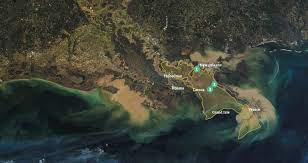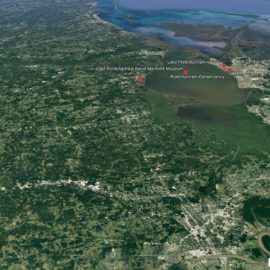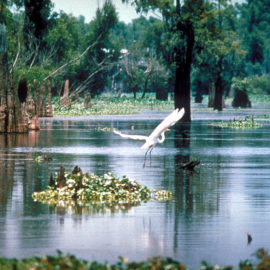
Louisiana is looking for a delta to study. Three are under consideration – Pontchartrain Basis, Atchafalaya Basin and the Barataria Basin.
Louisiana is considering whether the Atchafalaya, Barataria or Pontchartrain basins will become the first site dominated by a river delta in a federally sponsored network to protect, study and teach about estuaries. Nine virtual public meetings, three for each basin, have been scheduled in September to tell people statewide about the program and hear their thoughts. Louisiana is among seven coastal states that are not part of the National Estuarine Research Reserve System, guided and largely paid for by the National Oceanic and Atmospheric Administration. It’s the only Gulf Coast state without such a reserve, although variety is more important than state-by-state inclusion. And Louisiana’s will be unique, said Joelle Gore, stewardship division chief of the oceanic administration’s Office for Coastal Management. There’s a small delta in Alaska’s 372,000-acre Kachemak Bay reserve, and Alabama’s Weeks Bay reserve is within the extensive Mississippi River delta region, she said. But “the dominance of that system in Louisiana is unlike any other,” she said.
nola.com
It is all about estuaries. There are a number of ones around the country but none from Louisiana.
Estuaries are brackish bodies of water usually found where rivers meet the sea. The research reserve system is is made up of 29 estuaries in 23 states and Puerto Rico. It includes Great Lakes coastlines as well as those along the Gulf of Mexico and the Atlantic and Pacific oceans. Kachemak Bay is the largest, and Old Woman Creek in Ohio, at 573 acres, the smallest. Twenty-one are participating in a study of what climate-driven water level increases are doing to marshes, Gore said. She said Long Island Sound in Connecticut is likely to become the 30th reserve early next year. And Wisconsin, which has one reserve along Lake Superior, is working to add a second in Lake Michigan, a different “biogeographic subregion,” she said. That area and Louisiana’s are likely to be added in 2024 or 2025, she said.


We have been trying get one of our basins in the system for years but the chances look better now.
Gov. John Bel Edwards applied to join the system in 2019, something past administrations never got around to for one reason or another, Louisiana SeaGrant’s Robert Twilley said. For instance, he said, former Gov. Kathleen Blanco was very interested, but hurricanes Katrina and Rita hit in 2005, sending the estuary reserve system way down her priority list. Twilley said Louisiana’s 75-member site selection committee considered six of the state’s coastal basins but ruled out three: southwest Louisiana’s Calcasieu Basin, the Terrebonne Basin and the mouth of the Mississippi River. The Calcasieu Basin included too little state-owned land, which is an important part of the state-federal partnerships because the state manages day-to-day operations, he said. The other two areas were ruled out because there was too great a chance that many of the associated wetlands would be gone by 2050, he said. Louisiana has lost about 2,000 square miles of wetlands since the 1930s. The state has drawn up a 50-year, $50 billion coastal master plan to slow that loss. Work under that plan has so far been funded largely by settlements and fines from the BP oil disaster, although that money is not near the proposed total. “One of the things we’re very focused on” is ensuring that the site is one where research will enhance restoration under the master plan, said Kristin Ransom of the oceanic administration’s Office for Coastal Management in New Orleans. Twilley said he’s excited that education and outreach are a major focus of the reserve system.

The study of the basin chosen may well include land building as we are loosing land as I write this.
One thing setting it apart from programs such as SeaGrant is a requirement for a place where students on field trips and other visitors can learn about estuaries, and which also can serve as a jumping-off point for more extensive trips, he said. He said the Pontchartrain Basin proposal offers a Pontchartrain Conservancy center. Morgan City’s visitor center might serve as such a spot for the Atchafalaya Basin, as could the Jean Lafitte National Historical Park and Preserve for the Barataria Basin, he said.
Of the three, I favor the Barataria Basin as with the Mid-Barataria Diversion it puts a study factor into the equation. All three are close to New Orleans so we don’t lose. This will be something to watch as time progresses.



